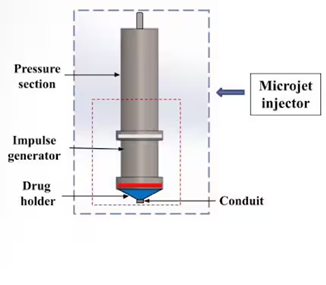Table of Contents
What is a Shock Syringe?
- It is a device that uses high-energy shock waves (pressure waves faster than the speed of sound) to deliver drugs without piercing the skin with a sharp needle. It creates a micro jet of liquid drugs.
- During takeoff, the microjet travels at almost twice the speed of a commercial aeroplane, penetrating the skin rapidly and gently.
- A shock syringe, also known as a shock dosing syringe, is a medical or emergency tool used to rapidly deliver a precise dose of medication or fluids during critical situations, such as treating anaphylactic shock, severe allergic reactions, or other emergencies.
- It is designed for quick and effective administration of drugs like epinephrine (adrenaline) or other emergency medications.
Key Features
- Pre-filled and Ready-to-Use: Many shock syringes are pre-filled with the appropriate medication to reduce preparation time during emergencies.
- Rapid Delivery: The design allows for fast administration, which is crucial during life-threatening situations.
- Precise Dosage: Ensures the patient receives the exact amount of medication needed.
- Portable: Compact and easy to carry, often included in first aid kits or emergency medical equipment.
Advantages
- Provides pain-free drug delivery.
- Eliminates the risk of blood-borne diseases caused by needle-stick injuries.
- Increases efficiency in immunization drives for both children and adults.
- Offers reliability and cost-effectiveness, with the ability to perform over 1,000 shots per syringe, requiring only nozzle replacement.

Common Uses
- Anaphylaxis: Administering epinephrine to counteract severe allergic reactions.
- Cardiac Arrest: Delivering specific drugs quickly during resuscitation efforts.
- Trauma or Severe Shock: Rapidly providing medications or fluids to stabilize the patient.


 Elon Musk’s America Party: A New Chapt...
Elon Musk’s America Party: A New Chapt...
 Bihar Assembly Election 2025: Complete G...
Bihar Assembly Election 2025: Complete G...
 17th BRICS Summit 2025: India’s Leader...
17th BRICS Summit 2025: India’s Leader...





















